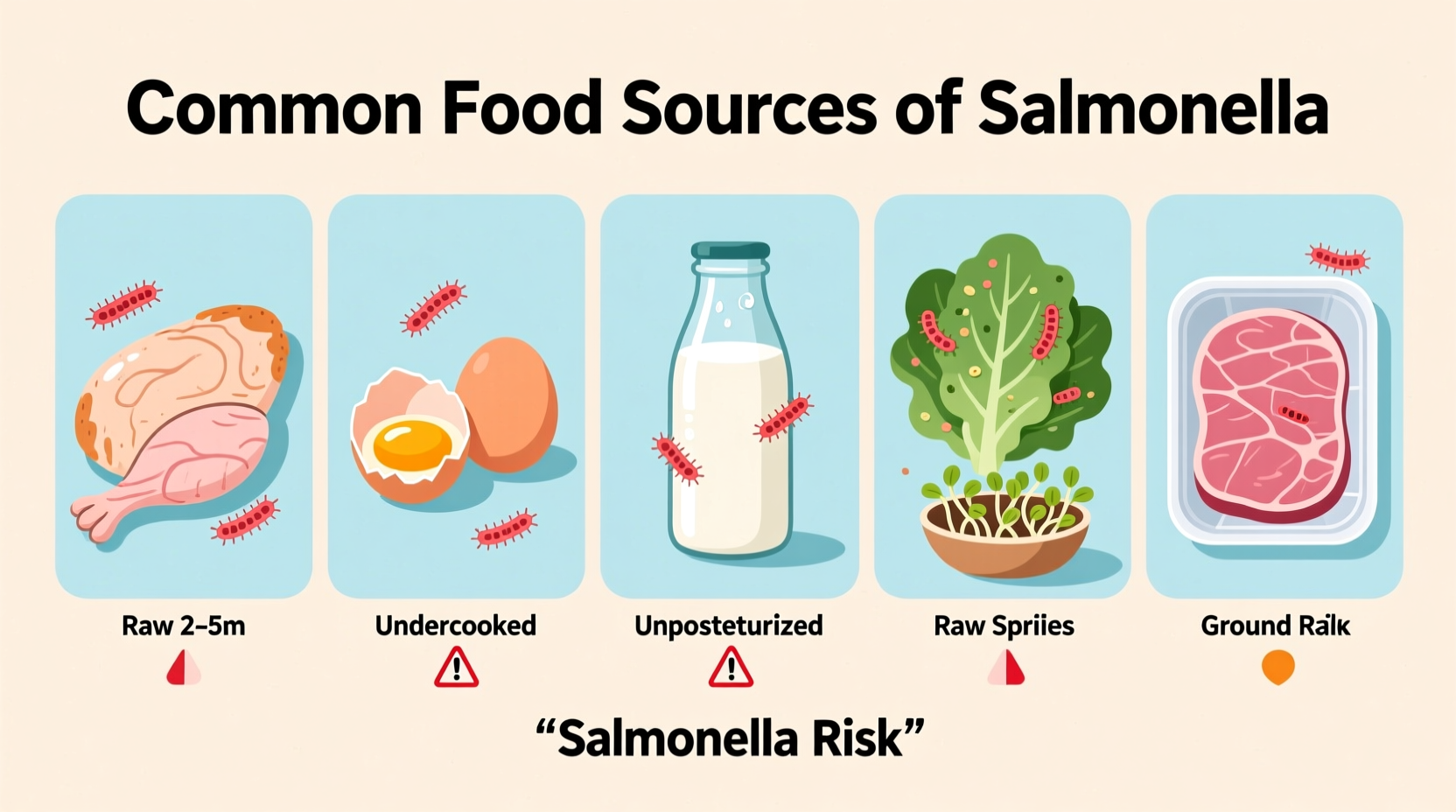The most common food sources of salmonella include raw or undercooked poultry (especially chicken), eggs from infected hens, unpasteurized dairy products, contaminated fresh produce like leafy greens and tomatoes, and improperly handled meat products. According to CDC data, poultry accounts for approximately 40% of salmonella infections, while eggs contribute to about 30% of cases. Proper cooking to recommended internal temperatures and avoiding cross-contamination are critical prevention measures that significantly reduce your risk of infection.
Every year, salmonella bacteria cause approximately 1.35 million illnesses, 26,500 hospitalizations, and 420 deaths in the United States alone, according to the Centers for Disease Control and Prevention (CDC). Understanding exactly which foods pose the highest risk isn't just helpful knowledge—it's essential protection for you and your family. This comprehensive guide breaks down the science behind salmonella contamination in our food supply and provides actionable steps you can implement immediately to safeguard your health.
Why Certain Foods Become Salmonella Hotspots
Salmonella bacteria naturally live in the intestinal tracts of animals, including food-producing animals like chickens, cows, and pigs. When these animals are processed for food, bacteria can contaminate meat, eggs, and dairy products. Additionally, produce can become contaminated through contact with contaminated water, soil, or animal feces during growing or processing.
The bacteria's ability to survive in various environments explains why certain food categories consistently appear in outbreak investigations. Unlike some pathogens that require specific conditions, salmonella can persist in dry environments for months and survive refrigeration temperatures, making it particularly challenging to control throughout the food supply chain.
High-Risk Food Categories: Evidence-Based Analysis
| Food Category | Contamination Risk Level | Primary Contamination Source | Prevention Strategy |
|---|---|---|---|
| Raw Poultry | Very High | Processing contamination | Cook to 165°F (74°C) internal temperature |
| Raw Eggs | High | Infected hens | Use pasteurized eggs for raw applications |
| Unpasteurized Dairy | High | Infected animals | Choose pasteurized products |
| Leafy Greens | Moderate-High | Contaminated irrigation water | Wash thoroughly, check recall notices |
| Raw Sprouts | Moderate | Warm, humid growing conditions | High-risk groups should avoid raw sprouts |
| Processed Meats | Moderate | Cross-contamination | Reheat to 165°F (74°C) |
Recent Outbreak Patterns: 2023-2024 Timeline
Tracking recent salmonella outbreaks provides valuable insight into evolving contamination patterns. According to the FDA's 2024 Food Code Update, the following timeline reveals shifting risk factors:
- January 2023: Multi-state outbreak linked to fresh cilantro imported from Mexico affected 127 people across 18 states
- June 2023: Salmonella Enteritidis outbreak associated with shell eggs from a Midwest producer led to 56 illnesses and a massive recall
- October 2023: Pre-cut melon products contaminated with Salmonella Typhimurium caused 32 illnesses in 10 states
- March 2024: Ready-to-eat chicken salad products implicated in a nationwide outbreak affecting 89 individuals
- August 2024: Imported tahini paste linked to a multistate outbreak with 45 confirmed cases
This evolving pattern demonstrates that salmonella risks extend beyond traditional high-risk categories like raw poultry and eggs. The increasing frequency of produce-related outbreaks highlights the importance of comprehensive food safety practices throughout the entire food system, from farm to table.

Understanding Cross-Contamination Risks
One of the most overlooked aspects of salmonella prevention is cross-contamination in home kitchens. Research published in the Journal of Food Protection (2023) found that 68% of home cooks transfer bacteria from raw chicken to ready-to-eat foods through improper handling practices. Common mistakes include:
- Using the same cutting board for raw meat and vegetables without proper sanitizing
- Touching raw meat then handling other kitchen surfaces without washing hands
- Storing raw meat above ready-to-eat foods in the refrigerator
- Using marinade that contacted raw meat on cooked foods
Implementing a color-coded cutting board system (red for meat, green for produce, etc.) and designating specific kitchen tools for raw meat handling can dramatically reduce these risks. The USDA recommends sanitizing cutting boards with a solution of 1 tablespoon of unscented liquid chlorine bleach per gallon of water after handling raw meat.
Special Considerations for High-Risk Groups
Certain populations face significantly higher risks from salmonella infection. According to the CDC, children under 5, adults over 65, and immunocompromised individuals experience more severe outcomes. For these groups, additional precautions are essential:
- Avoid all raw or undercooked eggs (including in homemade Caesar dressing or cookie dough)
- Choose pasteurized egg products for any recipe requiring raw eggs
- Avoid raw sprouts completely, as their growing conditions promote bacterial growth
- Be extra vigilant about produce washing techniques
- Consider avoiding buffet-style dining where temperature control may be uncertain
For parents of young children, the American Academy of Pediatrics specifically recommends avoiding giving raw or undercooked eggs to children under 5 years old, as their immune systems are still developing. This includes avoiding traditional eggnog recipes during holiday seasons unless pasteurized eggs are used.
Practical Prevention Strategies You Can Implement Today
Food safety experts agree that four key practices form the foundation of salmonella prevention:
- Clean: Wash hands, utensils, and surfaces with hot, soapy water before and after handling food. The FDA recommends washing hands for at least 20 seconds with warm water.
- Separate: Use separate cutting boards for raw meat and ready-to-eat foods. Store raw meat on the bottom shelf of your refrigerator to prevent drips.
- Cook: Use a food thermometer to ensure proper internal temperatures: poultry (165°F), ground meats (160°F), beef steaks (145°F with 3-minute rest).
- Chill: Refrigerate perishable foods within 2 hours (1 hour if temperatures exceed 90°F). Keep your refrigerator at or below 40°F.
For egg safety specifically, the Egg Safety Center recommends purchasing eggs only from refrigerated cases, checking expiration dates, and storing eggs in their original carton in the coldest part of your refrigerator (not the door). Hard-boiled eggs should be consumed within one week, while raw eggs in the shell remain safe for 3-5 weeks when properly refrigerated.











 浙公网安备
33010002000092号
浙公网安备
33010002000092号 浙B2-20120091-4
浙B2-20120091-4